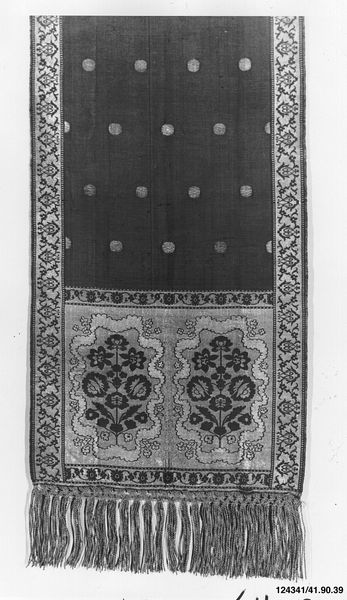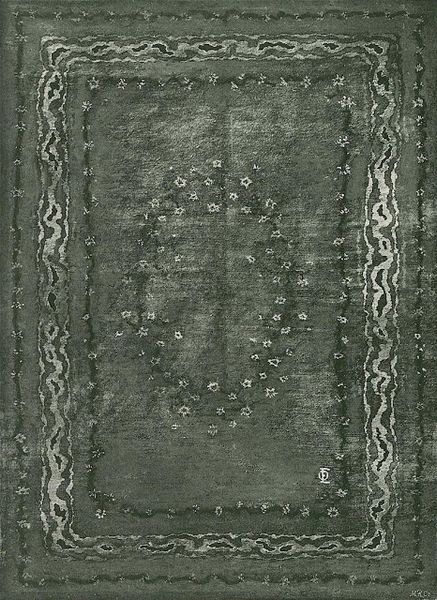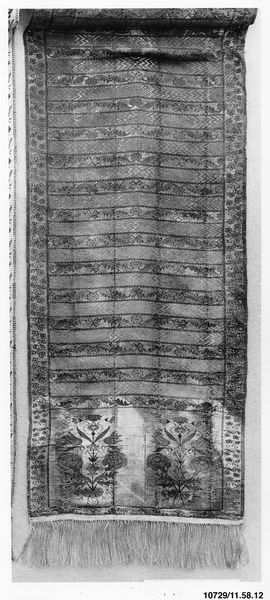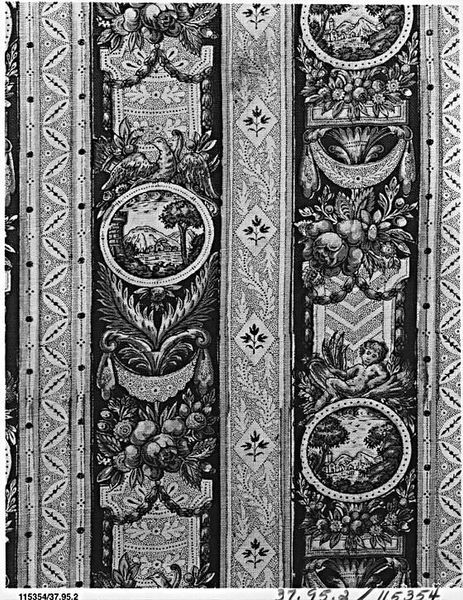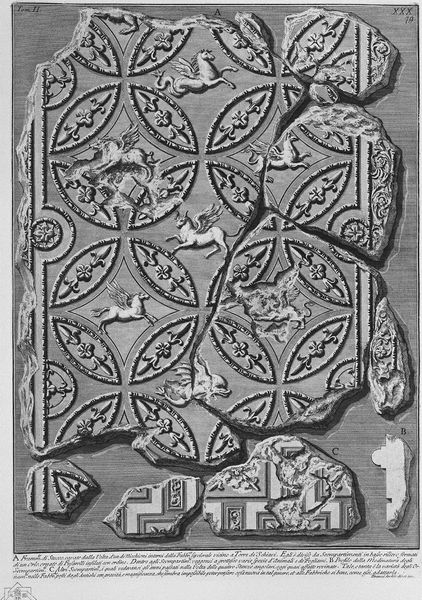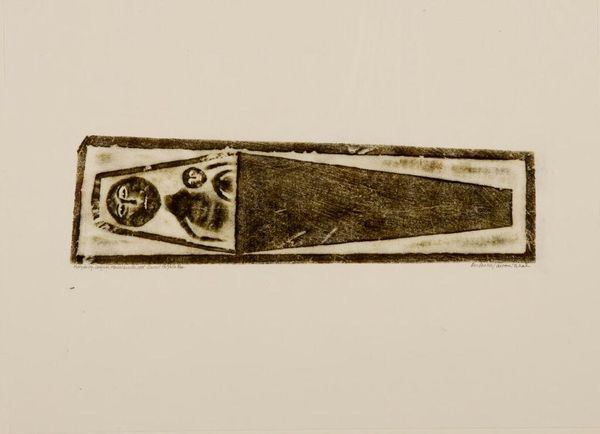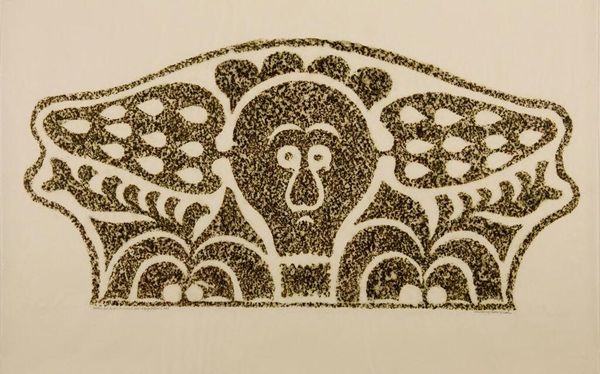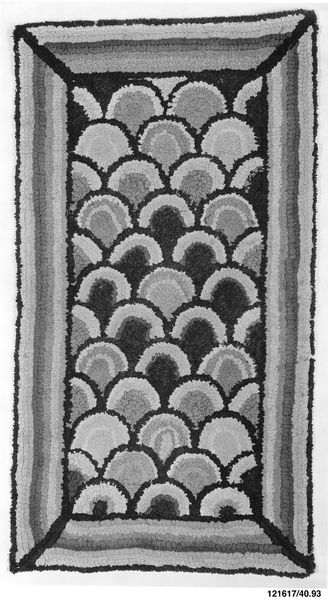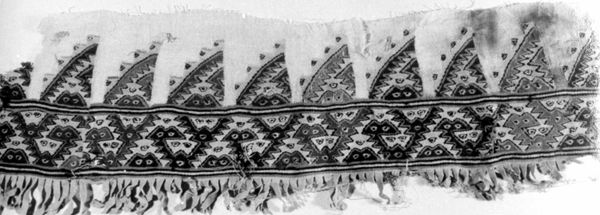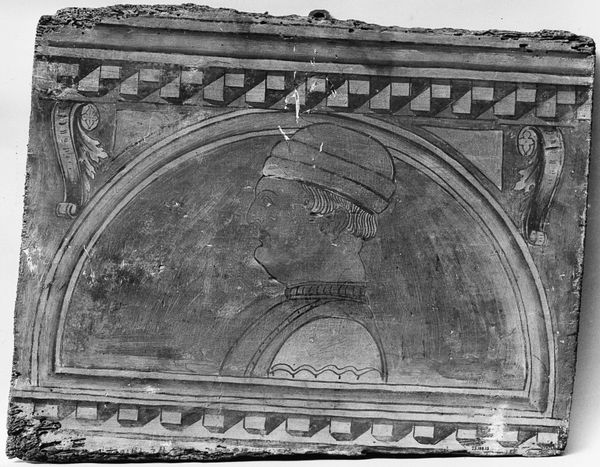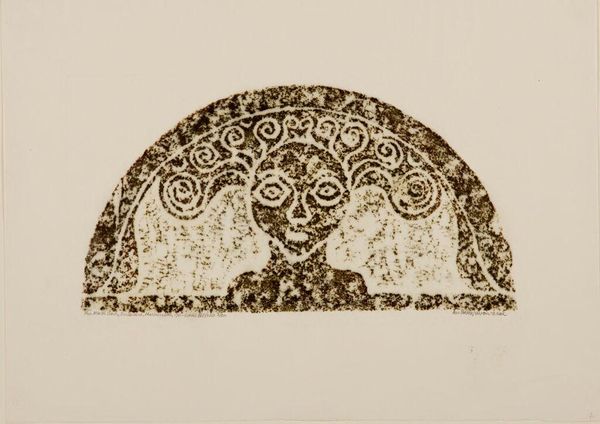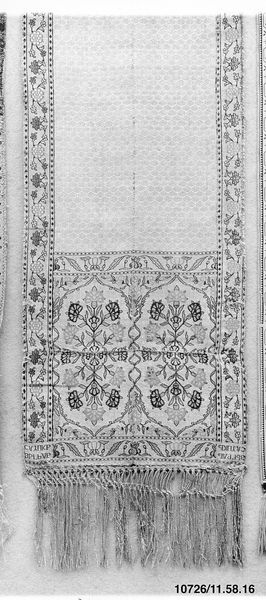
drawing, textile, ink
#
drawing
#
medieval
#
textile
#
ink
#
symbolism
#
russian-avant-garde
#
decorative-art
Copyright: Public domain
Curator: Here, we see "Curtain and Portal for 'Snow Maiden'," created by Nicholas Roerich in 1919. It’s an ink and textile drawing, and a compelling example of Russian Avant-Garde stage design. Editor: Wow. Just at first glance, it feels...primitive, in a way that’s also incredibly sophisticated. It gives the sense of folklore unearthed. Curator: That’s astute. Roerich was deeply interested in folklore, particularly its power in constructing national identity and spirituality, which comes through vividly. He often combined elements of symbolism and decorative art. Editor: Those silhouetted animals flanking the portal remind me of illustrations from ancient illuminated manuscripts. And that curtain, studded with what looks like tiny flowers, has this incredible tactile quality despite being rendered in ink. Curator: Precisely. Consider the time; 1919. Roerich, amidst revolution, returns to folk stories and medieval influences to locate stability for this specific staging. "The Snow Maiden" relates to old pagan stories and rituals, a pre-Christian past in sharp contrast with Soviet reality. Editor: So, it’s not just aesthetic. Roerich used these forms to reconnect with what came before? It's like a sanctuary amidst social upheaval, this return to folklore—this stage design creates the entry point. Curator: Absolutely, the stage became a contested zone where new values and social behaviors were defined, it functioned both to celebrate tradition and create pathways into a modern identity. His designs served to revive spiritual or traditional sensibilities, particularly within a modern, secularizing context. Editor: And the medium… ink on textile. The delicacy of it—it's so unlike what I think of when I envision stage design; the textile aspect softens what the lines might imply on their own, that old harsh division. Curator: Right. The very texture resists any starkness. Think of its tactility relating to practices like embroidery or carpet-making and all their labor associations. Roerich, at once, grounds his set within material processes and elevates their social implication, opening discussion about social and economic equity, gendered craftwork and the nature of folk history. Editor: It's fascinating how he weaves all these elements together. Makes you wonder about all the layers of meaning the audience would've seen... Curator: Indeed, looking at "Curtain and Portal for 'Snow Maiden'," reminds us that theatrical design can be powerfully tied to socio-political reflection. Editor: Exactly! The more you look at it, the more it unfolds; it’s more than meets the eye, like peering into a secret, very important world.
Comments
No comments
Be the first to comment and join the conversation on the ultimate creative platform.

